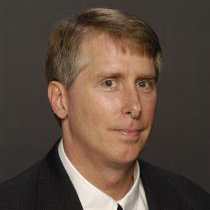Timothy Keady

Timothy Keady is the Associate Director of the Student Health Center at RIT. This month, he shares with us how critical thinking impacts his ability to help students successfully implement changes in their own lives. Read his answers to a few critical thinking questions here:
1. How Do You Teach Applied Critical Thinking?
In my position with Student Wellness, I have the opportunity to teach Applied Critical Thinking in many disciplines. For example: On Monday, I may be trying to help an individual or group of students overcome various sleep or stress issues. On Tuesday, I may meet with RIT Ambulance members discussing their response to a call. And on Wednesday, I am in an Exercise Science Department classroom lecturing on the appropriate use of the Health Belief Model for a patient who smokes.
In all of these diverse experiences I follow a similar teaching methodology; encourage students to identify the problem, review available information, collect additional facts, and evaluate all the data without pre-conclusions, Applied Critical Thinking. Education should and can be a stimulating collaboration between knowledge seekers. The outcome can be a brilliant success or a dismal failure, but the learning and thinking process is always instructive for the participants.
In all of my roles, my goal is to provide active real world Applied Critical Thinking experiences related to the stakeholders specific interests and needs (at this precise time). Documenting what is happening before bed, why was the call not what they expected, and when does their patient smoke, begins the extended process that I feel will provide our students with the best learning experience. And it is more fun for all of us.
2. Why Do You Think Applied Critical Thinking is Important in Your Domain?
For myself, when dealing with someone’s health (while teaching, during consultations, or when responding to an emergency), assessing and reassessing (Applied Critical Thinking) is part of many years of training and done continually. I have found that if you have an expectation of a result you may miss important signs or symptoms of a much larger, possibly life threatening health issue.
I encourage students to look beyond the “normal or expected” results or conclusions to situations or questions posed to them and actively evaluate the issue to make the best choices possible. In other words, use Applied Critical Thinking.
3. Can You Share a Story Where Quality Applied Critical Thinking Was Key to Your Success?
While in Graduate School, I was part of a group asked to participate in a very large grant funded project to evaluate the health of elementary students in a western state. As we began evaluations of the children it became apparent that a large error had been made in the design of the evaluation.
As Graduate Students working under the Professor who had been awarded this large grant we debated the benefit vs risk of telling him his basic premise of the study (that muscular development of all children in K-5th grade followed specific data points) was incorrect. We were being paid very well (which was unusual at that time) and he would be instrumental in deciding if we would graduate.
In the end we used Applied Critical Thinking and quality data assessment to show the Professor preliminary outcomes that resulted in him shutting down the project. And to our surprise, we were thanked for the discovery. We didn’t just say he was wrong, we showed him empirical evidence of what the data revealed. Quality Applied Critical Thinking saved almost one million dollars of dollars of taxpayer money.
4. How Do You Use Critical Thinking in Other Areas of Your Life Outside of RIT?
In our family we use Critical Thinking to create five and ten year plans. We identify goals, gather data, and evaluate what is needed to attain them. Planning for the future using Critical Thinking has allowed us to make choices that we are very comfortable with.
5. Any Last Critical Thoughts?
The use of computer aided electronic tools has made thinking a “google it” experience for many students (and people in general). I would challenge students to put down their phones, close their computers, turn off the music, and spend time experiencing Applied Critical Thinking in an active deliberate way. The results may surprise them.
I appreciate the opportunity to provide my thoughts on Applied Critical Thinking. This experience has revealed that I do not use the actual terms in my interaction with students. I will correct that and be more deliberate in my use of the term, Applied Critical Thinking.